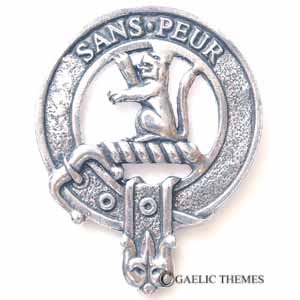Sutherland
Select
- Design: Standard
- Clan Motto: Sanse peur (Without Fear)
- Notes:
Crest: A cat-a-mountain sejant rampant Proper
Sutherland is a place name derived from the old Norse ‘Sudrland’ or ‘Southland’. The family is likely of Flemish origin, descended from Freskin, whose grandson Hugh was granted land in Moray around 1130.
Hugh held lands in Sutherland and was referred to as Lord of Sutherland. His son, William, became Earl of Sutherland around 1235.
Kenneth, the fourth earl, was killed alongside the regent of Scotland while fighting the English at the battle of Halidon Hill. William, the fifth earl Sutherland, was married to the daughter of Robert the Bruce. William was murdered by the Mackays in 1370 starting a feud that would run for about four hundred years.
The sixth earl was Robert, William’s son from his second marriage, built the castle at Dunrobin and married the niece of Robert III.
Adam Gordon, an ambitious son of the Earl of Huntly, was son-in-law to the eighth Earl of Sutherland, John. In 1494, Gordon had John declared unfit to manage his affairs. Even more -- he brought a charge of idiocy against John’s heir, and a charge of illegitimacy against the earl’s youngest son. This son was later murdered mysteriously and Gordon’s wife succeeded to the Sutherland titles and lands.
John, the sixteenth Earl, resumed the ancient surname of Sutherland and was made Lord Lieutenant for the north of Scotland in 1715. He declared for George I and defended Inverness against the Jacobites.
At the start of the 1745 Uprising, John’s son William (seventeenth earl) mended relations with the Mackays. He and his militia went on to fight against northern Jacobites. When Dunrobin castle was occupied by the the earl of Cromarty, Sutherland defeated and captured him. This made Dunrobin the first British castle to be captured with bloodshed in time of war.
The death of the seventeenth earl led to a legal dispute -- only his daughter Elizabeth survived him. Elizabeth’s claim was challenged by male would-be heirs until 1771 when the House of Lords found in her favor, confirming her as Countess. She married the Marquess of Stafford who was later created first Duke of Sutherland in 1833.
The Duke set up industries on the coast and cleared his pastoral tenants off the land. Some of his rural tenants were moved to work in distilleries and other businesses he created. He lost a great deal of money and was never really forgiven for the clearances.
The second Duke remodeled Dunrobin castle into a French chateau with the help of architect, Sir Charles Barry. The castle was badly damaged by fire in 1915 but later partially restored. It is now open to the public. The third Duke contributed a quarter of a million pounds to the construction of the Highland railway. Today there are separate Earldoms and Dukedoms of Sutherland. Both families still live in Scotland.
